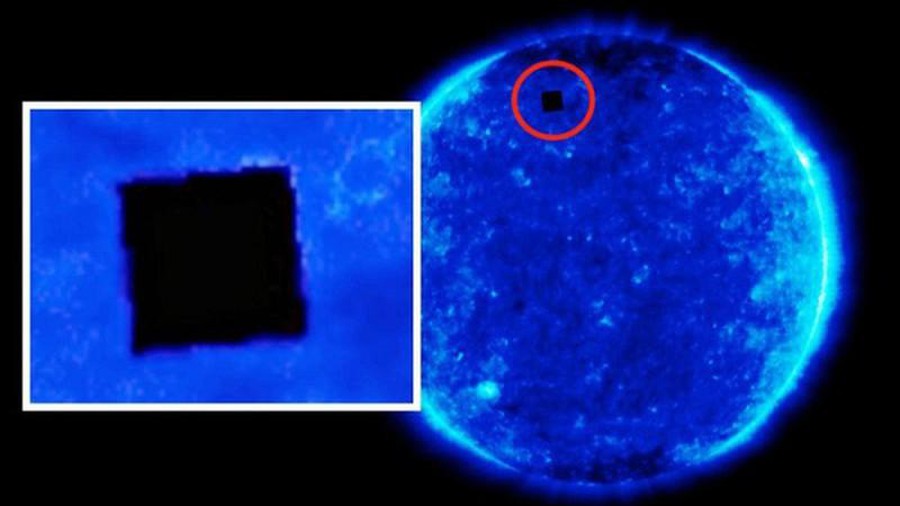Detecting monstrous black holes, 20 billion times larger than the sun and growing 'fast'
This supermassive black hole was observed when it appeared about 12 billion light years ago, has an estimated size of 20 billion suns - and is extremely 'starving'.
According to scientists' estimates, black holes are growing at an unusually fast rate. This 'voracious monster' grows 1% every 1 million years, devouring gas, dust, stars and any other celestial body the same size and mass as our sun. two days.
"This black hole is growing so fast that it emits a thousand times more light than a typical galaxy. This is because the amount of matter it absorbs on a daily basis causes a lot of killing and killing. heat, "said Dr. Christian Wolf, team member.
The light emitted from these supermassive black holes, also known as quasars, is so bright that if it were at the center of our galaxy (the Milky Way), it would be 10 times brighter than full moon day and almost completely eclipses the light emitted by other stars in the sky. Of course life on Earth will also perish because of the enormous amount of X-rays emitted from it.

The premise for future discoveries
Known as QSO SMSS J215728.21-360215.1 (J2157-3602 for short), this giant black hole was discovered using data collected by Gaia satellite of the European Space Agency. Europe (ESA), the NASA Wide Field Infrared Expeditioner (WISE), and the ANU SkyMapper Telescope.
Unlike other giant quasars that have been discovered previously, researchers are still unable to fully understand how this quasar can grow surprisingly large in such a short time period.
According to Dr. Wolf, the average black hole is about the size of 50 suns. In the case of J2157-3602, however, based on the current rate of growth of this singular black hole, he assumed that it had had a mass almost 5,000 suns since its birth.
In fact, cases of extremely hungry supermassive black holes are rarely discovered. Therefore, researchers hope that in the future, data collected from J2157-3602 will help humanity continue to discover other 'giant monsters with bottomless stomachs' lurking. in the universe.
You should read it
- 10 interesting facts about black holes in the universe (Part 1)
- Detecting an active supermassive black hole at an unprecedented distance
- A new discovery about the strange interaction between cosmic black holes and light
- Discover the most bizarre black holes in the mysterious space universe
- 10 interesting facts about black holes in the universe (Part 2)
- Shocking discovery in astronomy: 3 supermassive black holes in the same galaxy
- Hubble begins its hunt for hard-to-identify medium-sized black holes
- Successfully creating cosmic black holes, demonstrating Hawking radiation exists
- Discover the terrible war between two giant black holes in the universe
- Our galaxy contains countless invisible black holes?
- Find out how to weigh black holes based on galaxy spiral arms
- Discovering new gravitational waves from two black holes collides 3 billion light-years away
May be interested

Mysterious black objects appear in NASA sun photos

3D map of the largest universe ever

Detecting strange objects like alien coffins on Mars

10 strange and interesting facts about the universe you may not have heard of

SpaceX's Crew Dragon spacecraft successfully assembled with the ISS station, completely automated

Watch live the first SpaceX spacecraft launch event






 Detecting an active supermassive black hole at an unprecedented distance
Detecting an active supermassive black hole at an unprecedented distance 10 interesting facts about black holes in the universe (Part 1)
10 interesting facts about black holes in the universe (Part 1) Discovering new gravitational waves from two black holes collides 3 billion light-years away
Discovering new gravitational waves from two black holes collides 3 billion light-years away Discover the most bizarre black holes in the mysterious space universe
Discover the most bizarre black holes in the mysterious space universe The discovery of a giant black hole, 70 times the mass of the Sun in the Milky Way, challenges every theory
The discovery of a giant black hole, 70 times the mass of the Sun in the Milky Way, challenges every theory A new discovery about the strange interaction between cosmic black holes and light
A new discovery about the strange interaction between cosmic black holes and light